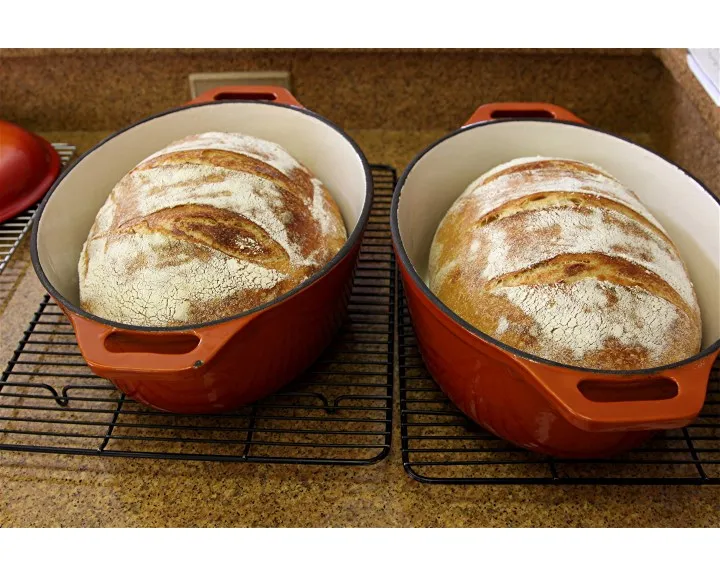Dutch Oven Baking - Atta Durum Flour and K.A. Bread Flour

This bread is made using 50% Golden Temple Atta durum wheat flour (not semolina) and 50% King Arthur bread flour. In the past I have used King Arthur durum flour. For this bake I decided to try Golden Temple Atta. The main difference I noticed between the King Arthur and Golden Temple durum flour, is King Arthur durum gives a yellowish color to the crumb, whereas Atta gives the crumb a light- golden tan color. Other than color, I think the flavor of the two flours are comparable in taste/flavor. After I finished baking this bread, I was putting away the Golden

